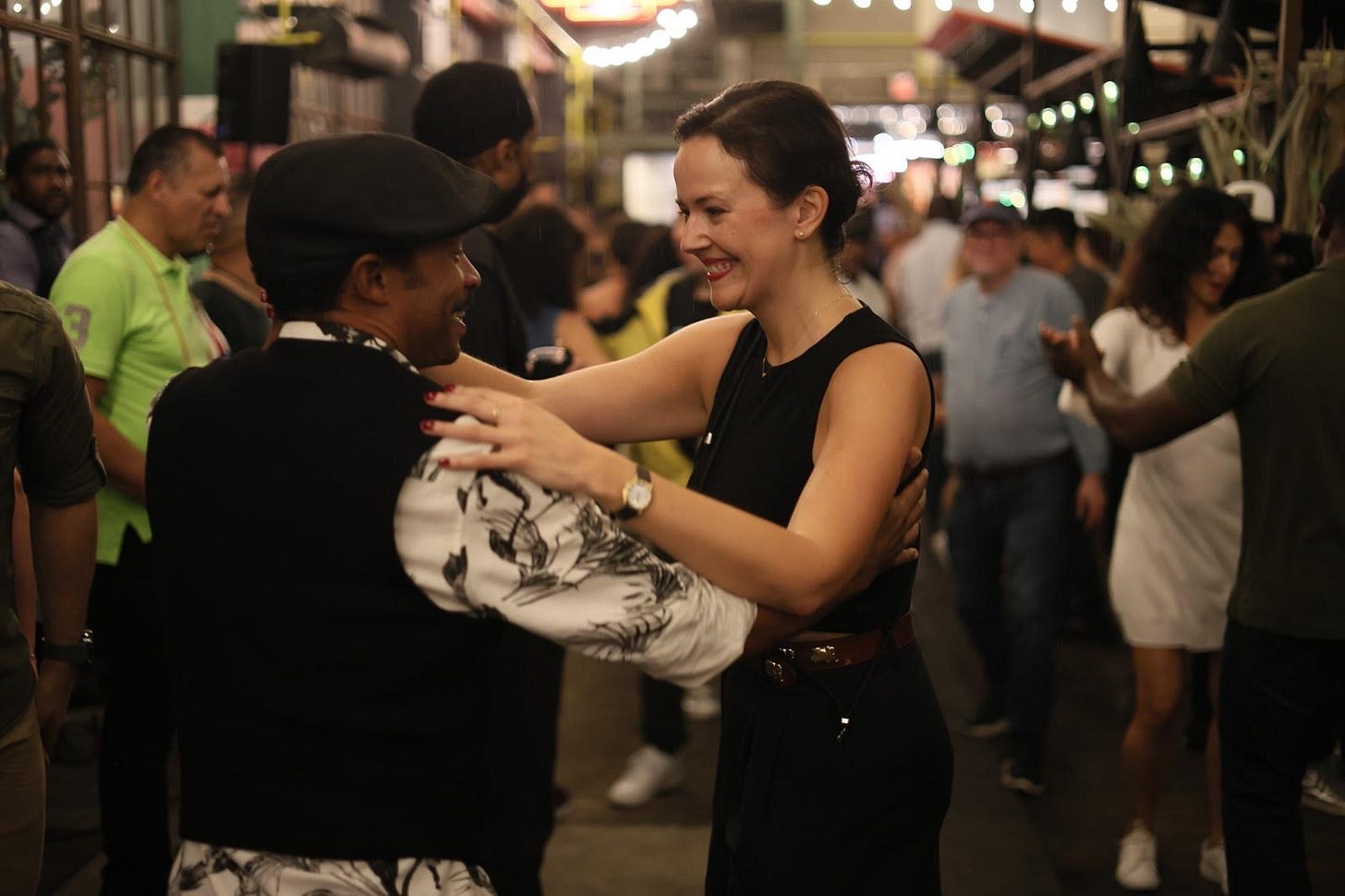What do dancing salsa and learning a language have in common?
Why Professional Fluency—In Dance and Language—Requires More Than Just Growing Up With It
This year, I made a commitment to improve my salsa dancing. While some friends complimented my skills, living in New York City—where world-class dancers perform regularly—showed me how much higher I could aim. What surprised me wasn't just how much I improved, but the realization that learning to dance professionally mirrors language acquisition in ways I never expected.
The Natural vs. The Professional
In many cultures worldwide, dancing is part of daily life. Family gatherings, celebrations, and community events naturally incorporate dancing, with most people developing a comfortable level of skill through simple exposure and participation. But there's a clear distinction between this cultural familiarity and professional mastery.
Professional dancers don't just move to music—they create choreographies, combine complex steps, and perform with a precision that comes only through years of dedicated training. The parallel to language learning couldn't be more striking. I often joke that I'm a "second language learner" of salsa. Despite my improvement, anyone watching can tell I didn't grow up immersed in this dance tradition—and that's perfectly fine. I'm not trying to disguise my journey; I'm embracing it.
Beyond Conversational Fluency
Growing up speaking a language is much like growing up in a dance-centered family. You absorb the basics naturally, without formal instruction. But there's a significant gap between casual conversation and professional language use—writing reports, giving presentations, or crafting persuasive arguments demands a higher level of mastery.
The Grammar of Movement
Before taking structured classes, I would attempt to follow along during social dancing, relying heavily on partners to guide my movements. I'll never forget the day our instructor had us perform steps without holding our partner's arms—dancing independently but in sync. I froze completely.
That moment was illuminating: I hadn't truly learned the "grammar" of salsa. I could mimic and follow, but I couldn't generate the patterns independently or understand the underlying structure that gives dancers freedom to improvise while maintaining the essence of the dance.
The Familiar vs. The Formal
People who grew up speaking one language at home and another at school —known as heritage speakers— often feel limited when using their home language in professional or academic settings. The disconnect isn't about ability—it's about training.
Just as I needed formal instruction to understand salsa's underlying patterns and principles, heritage speakers need educational experiences that bridge their natural fluency with the structured knowledge required for professional contexts.
Finding Confidence in the Learning Process
What both journeys—language and dance—ultimately teach us is that mastery requires acknowledging where we are in the learning process. Whether you're struggling to dance without a partner's guidance or searching for professional vocabulary in your heritage language, the path forward begins with recognizing that it's not lack of capacity holding you back—it's simply a need for specific training in new contexts.
And there's beauty in embracing that journey, with all its missteps and breakthroughs, as we learn to communicate fluently—whether through words or movement.




